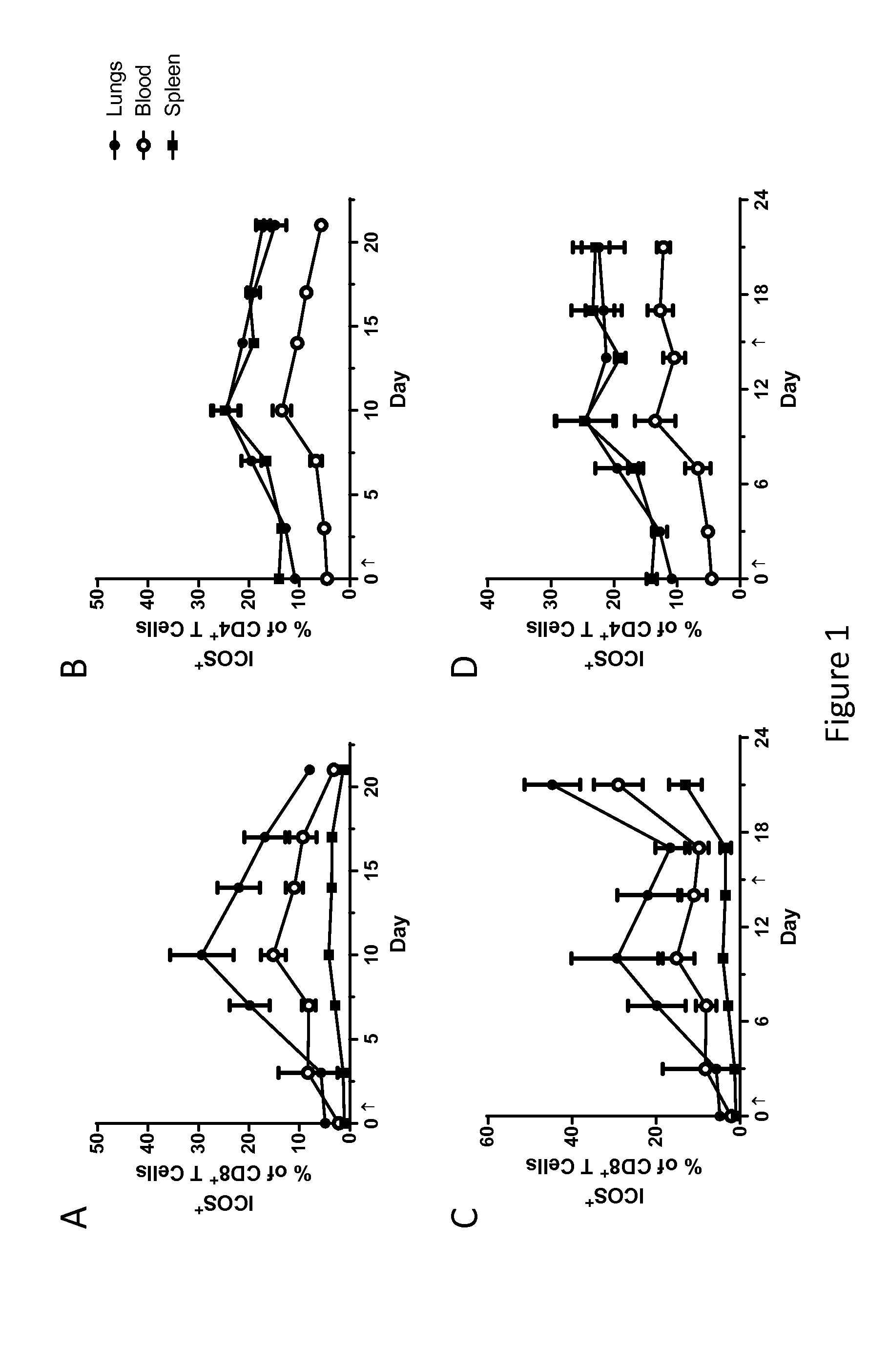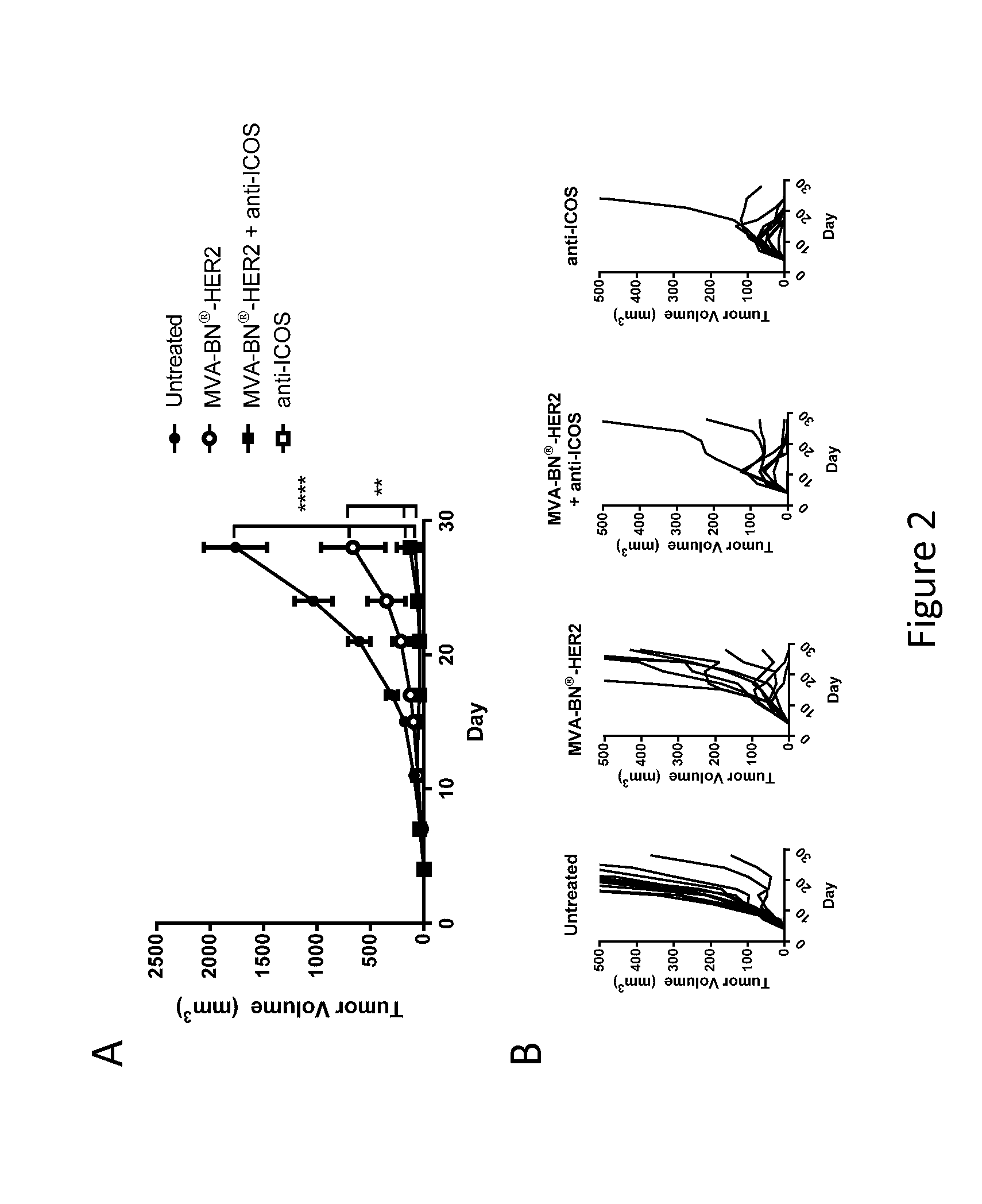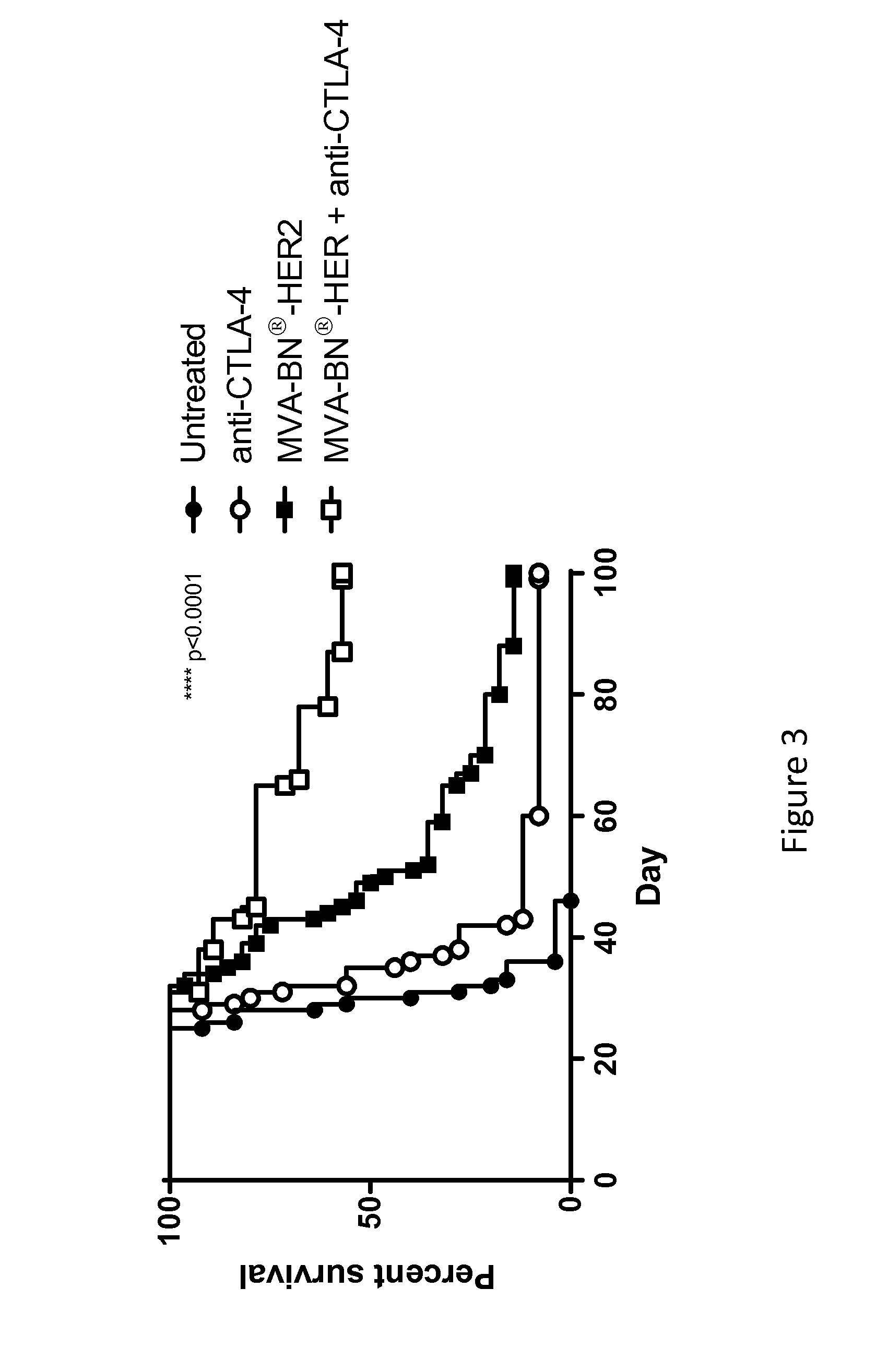Combination Therapy for Treating Cancer with a Poxvirus Expressing a Tumor Antigen and an Antagonist and/or Agonist of an Immune Checkpoint Inhibitor
a technology of poxvirus and tumor antigen, which is applied in the direction of antibody medical ingredients, dsdna viruses, drug compositions, etc., can solve the problems of residual replication undesirable, mva is not fully attenuated, and is not capable of significant reproductive replication in certain human cell lines known to permit replication with known vaccinia strains
- Summary
- Abstract
- Description
- Claims
- Application Information
AI Technical Summary
Benefits of technology
Problems solved by technology
Method used
Image
Examples
example 1
Construction of MVA-BN-mHER2
[0185]Simultaneous infection and transfection of cultures allowed homologous recombination to occur between the viral genome and the recombination plasmid. Insert-carrying virus was isolated, characterized, and virus stocks were prepared.
[0186]Plasmid pBN279 contains sequences which are also present in MVA-BN (the Intergenic Region between ORF 64 and 65, IGR 64 / 65). The mHER2 sequence was inserted between the MVA-BN sequences to allow for recombination into the MVA-BN viral genome. Thus, a plasmid was constructed that contained the mHER2 sequence downstream of a poxvirus promoter, specifically the synthetic vaccinia virus promoter (PrS). The plasmid also contained a selection cassette comprising the PrS promoter upstream of a drug resistance gene (guanine-xanthine phosphoribosyltransferase; EcoGPT) and a PrS promoter upstream of monomeric Red Fluorescence Protein 1 (mRFP1).
[0187]The HER-2 sequence was modified by addition of nucleotides sequences encoding...
example 2
Induction of an Anti-Tumor Response in Mice Treated with MVA-BN-HER2 and Antibodies
[0197]Female BALB / c mice (6-8 weeks old, ˜20 g) were purchased from Simonsen Laboratories, Gilroy, Calif. For the experimental lung metastasis model, mice were implanted i.v. with 5.0×104 CT26-HER-2 cells in 300 μL DPBS which forms tumors in the lungs. In the solid tumor model, mice were implanted i.d. in the back with 1.0×105 CT26-HER-2 cells in 100 μL DPBS. Tumors were measured twice weekly and the tumor volume calculated according to the formula: tumor volume (mm3)=(length×width2) / 2.
[0198]The following antibodies were purchased from Bio X Cell (West, Lebanon, N.H.): anti-ICOS (Clone 17G9), anti-CTLA-4 (9D9), anti-PD-1 (RMP1-14), and anti-LAG-3 (C9B7W). All antibodies were injected i.p. at 200 μg per mouse in 100 μL PBS on the days indicated in the figure legends. For virus treatments, mice were treated with 7.1 μL of 1.0×107 Inf. U. MVA-BN-mHER2 by tail scarification (t.s., produced by Bavarian Nor...
example 3
MVA-BN-HER2 Treatment Increases ICOS on CD8+ and CD4+ T Cells
[0201]Naïve, tumor free mice were treated with MVA-BN-mHER2 (1E7 Inf.U. t.s.) on day 1 or days 1 and 15. Organs from 3 mice at each time point. Shown in FIG. 1, treatment with MV-BN-mHER2 increased ICOS expression on CD8+ and CD4+ T Cells.
PUM
| Property | Measurement | Unit |
|---|---|---|
| volume | aaaaa | aaaaa |
| median survival time | aaaaa | aaaaa |
| median survival time | aaaaa | aaaaa |
Abstract
Description
Claims
Application Information
 Login to View More
Login to View More - R&D
- Intellectual Property
- Life Sciences
- Materials
- Tech Scout
- Unparalleled Data Quality
- Higher Quality Content
- 60% Fewer Hallucinations
Browse by: Latest US Patents, China's latest patents, Technical Efficacy Thesaurus, Application Domain, Technology Topic, Popular Technical Reports.
© 2025 PatSnap. All rights reserved.Legal|Privacy policy|Modern Slavery Act Transparency Statement|Sitemap|About US| Contact US: help@patsnap.com



